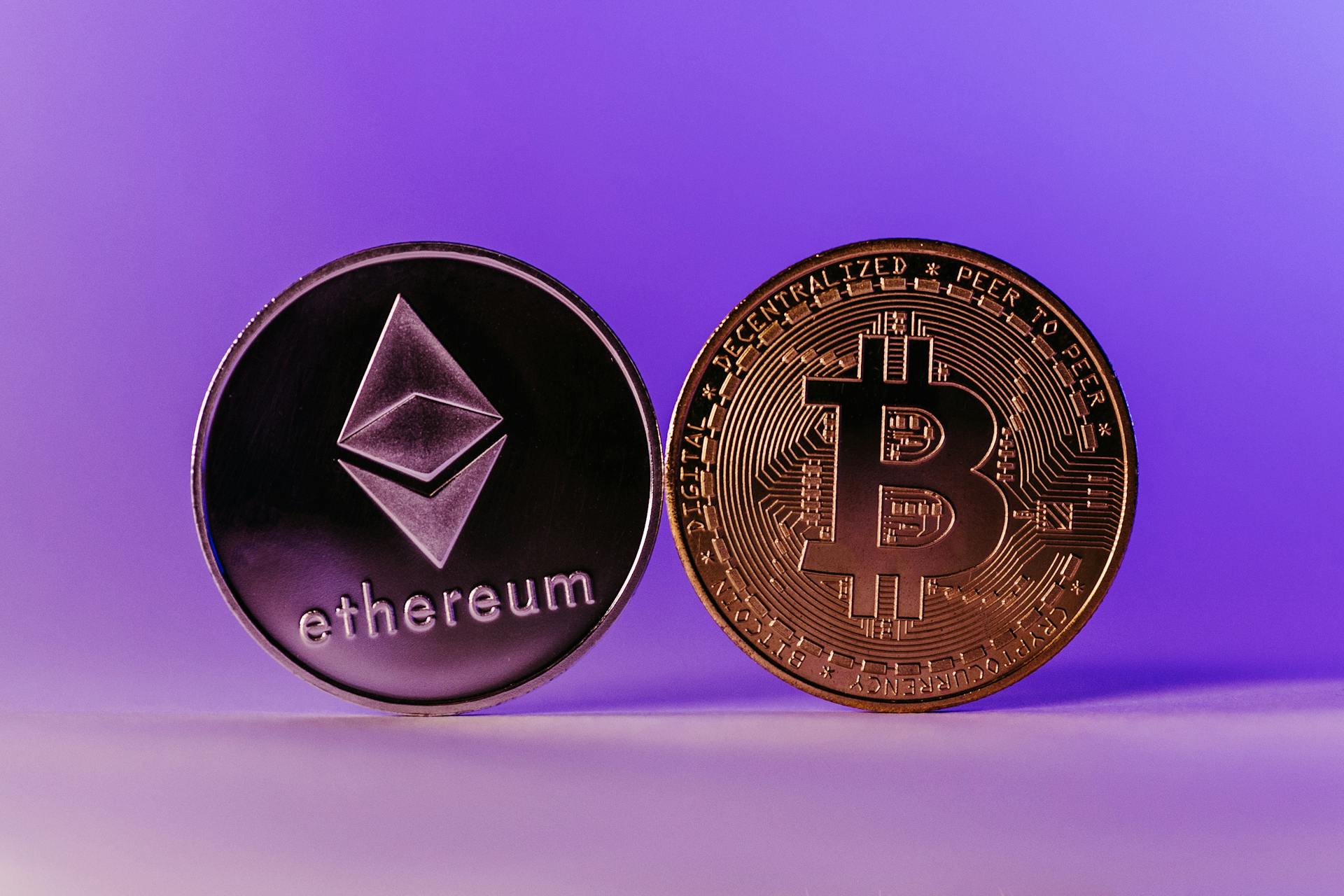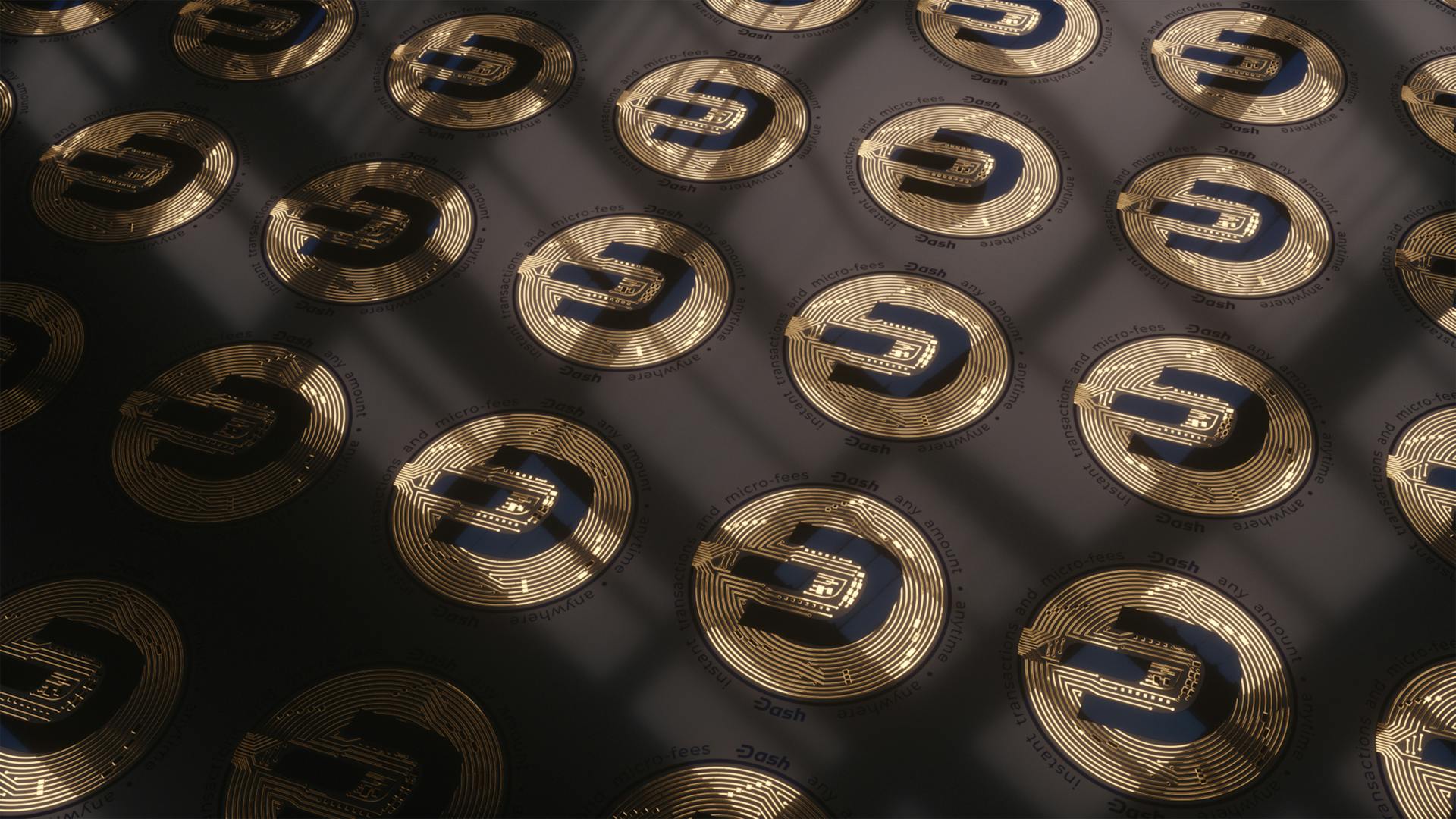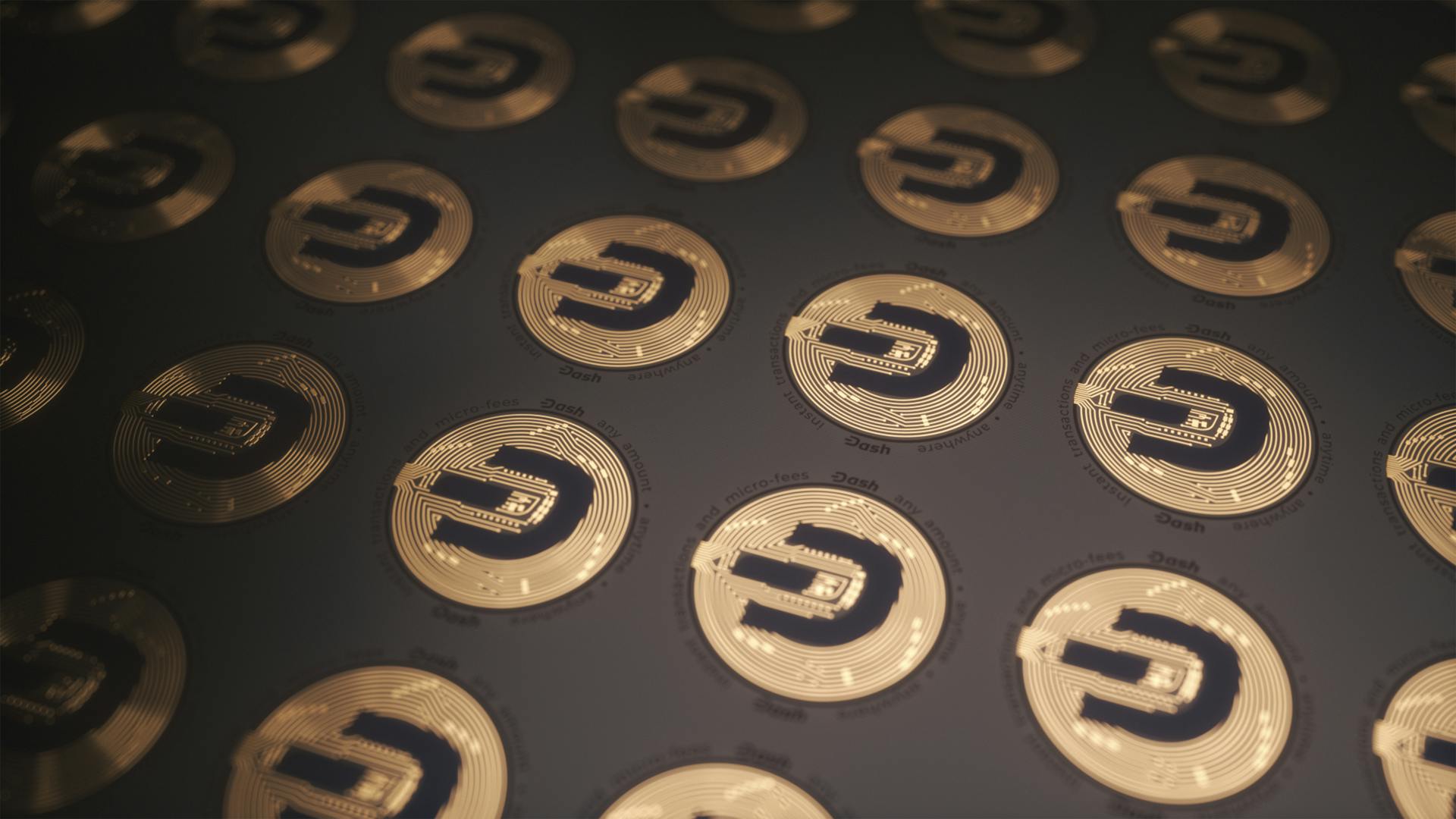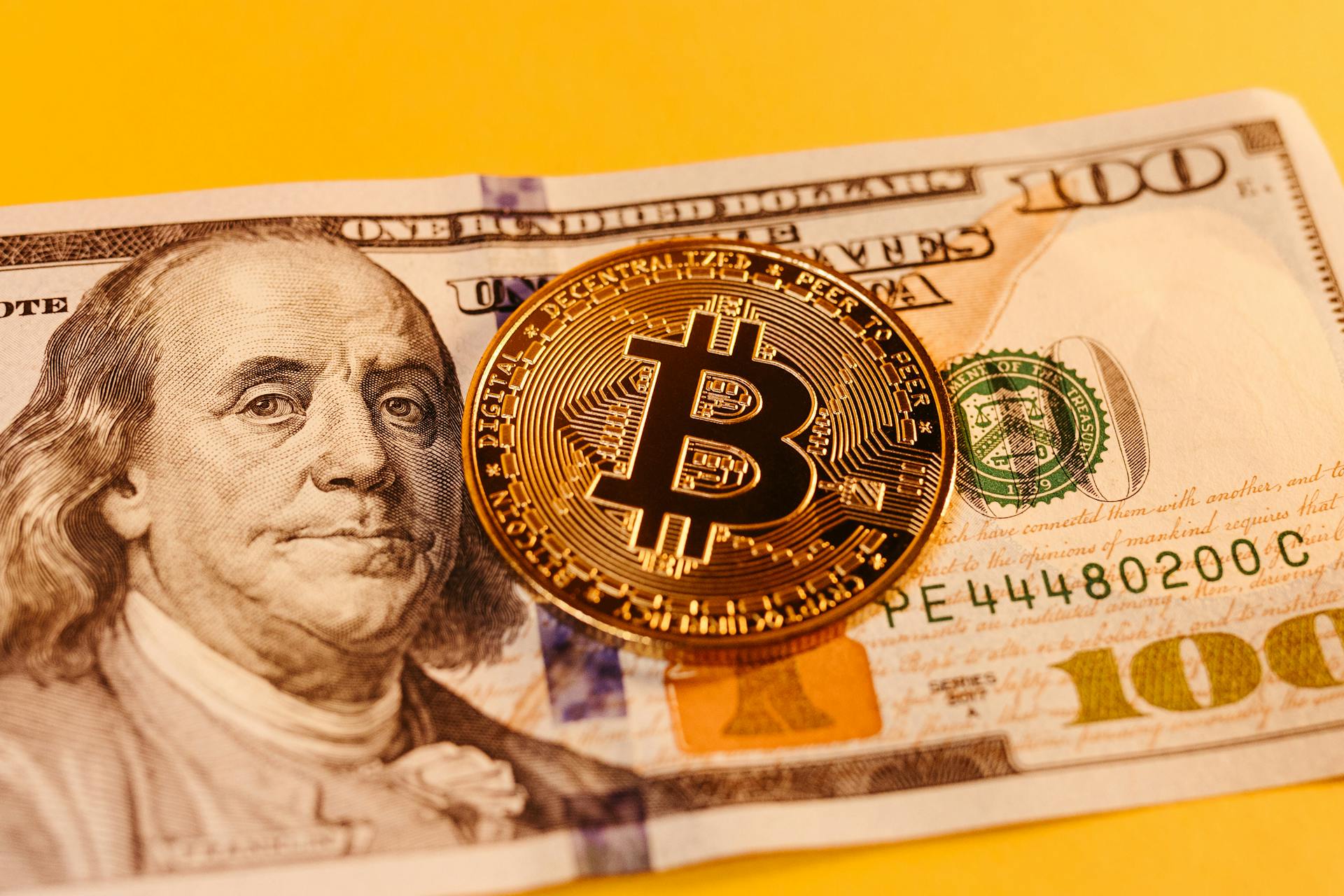
Decentralized exchanges have been around since 2017, with the first one being OpenANX. They're a game-changer in the cryptocurrency space, offering a more secure and transparent way to trade digital assets.
Decentralized exchanges operate on blockchain technology, which ensures that transactions are recorded and verified in a transparent and tamper-proof manner. This is a significant improvement over traditional centralized exchanges, which are vulnerable to hacks and manipulation.
The benefits of decentralized exchanges are numerous, including increased security, reduced fees, and greater user control. For instance, users can trade directly with each other without the need for intermediaries, reducing the risk of counterparty risk.
Decentralized exchanges also offer greater flexibility and customization options, allowing users to create their own trading interfaces and strategies. This is made possible by the use of smart contracts, which enable the automation of complex trading rules and logic.
Recommended read: Bitcoin Lightning Exchanges
Development Process
Decentralized exchange development involves several key steps. You'll need to gain an in-depth understanding of blockchain technologies like Ethereum, Binance Smart Chain, or other suitable options.
To get started, you'll need to conduct a thorough analysis of the business requirements, including the choice of blockchain platform, consensus mechanism, supported trading pairs, and compliance with relevant regulatory frameworks like Know Your Customer (KYC) and Anti-Money Laundering (AML). This will help you choose the blockchain network that aligns with the DEX's scalability and throughput needs.
Here are the essential steps to create a decentralized exchange:
- Choose a DEX type (Aggregator, Order Book Model or Automated Market Maker (AMM)).
- Determine the project's objectives, target market and unique selling points.
- Pick a blockchain like Ethereum, Binance Smart Chain or Polygon.
- Consider elements such as token compatibility, network speed and transaction fees.
These steps will help you lay the foundation for a successful decentralized exchange development project.
Prototype and MVP
In the development process, a prototype serves as the foundation for the full product, allowing for adjustments before the final version is developed.
A prototype is constructed to test and refine the product's core features and functionality. This step often includes MVP creation, enabling rapid market entry and iterative enhancements.
The prototype provides a tangible representation of the product, making it easier to identify and address potential issues before investing too much time and resources.
10 Steps to Create
Creating a decentralized exchange (DEX) requires a thoughtful and multi-step approach. Here's a breakdown of the 10 key steps to get you started:
1. Choose a DEX type, such as Aggregator, Order Book Model, or Automated Market Maker (AMM).
2. Determine the project's objectives, target market, and unique selling points.
To deploy the DEX, you'll need to pick a blockchain like Ethereum, Binance Smart Chain, or Polygon, considering factors such as token compatibility, network speed, and transaction fees.
1. For essential components like fees, liquidity pools, and token exchange, make smart contracts.
2. Thoroughly test the contracts to ensure they work and are safe.
When it comes to providing liquidity, you'll need to choose the right method, such as Automated Market Maker liquidity pools, and decide whether to reward liquidity providers with trading fees or tokens.
1. Create an easy-to-use interface that lets users see prices, link their wallets, and make purchases.
Explore further: Decentralized Finance Market

2. Make sure the blockchain and user interface work well together.
To allow users to engage with the DEX, you'll need to provide wallet connectivity for popular cryptocurrency wallets, such as MetaMask and Trust Wallet.
1. Conduct thorough testing, including stress tests, user experience testing, and security audits of smart contracts.
2. Determine and fix any possible vulnerabilities.
Finally, deploy the UI and smart contracts on the selected blockchain, confirm and publish contract addresses, and launch the platform, making sure to onboard early users and maintain liquidity.
Here's a summary of the 10 steps to create a DEX:
Key Components and Features
Decentralized exchanges rely on blockchain technology to ensure secure transaction recording across a distributed network.
Blockchain technology is the backbone of DEXs, providing a secure and transparent way to record transactions.
Smart contracts are self-executing contracts that automatically enforce the terms of trading agreements without the need for intermediaries.
These contracts create a safe and open trade environment by ensuring that transactions meet certain conditions before they go through.
Token standards are established rules that dictate how tokens are created and managed on the blockchain, facilitating interoperability among different platforms.
Decentralized exchanges use token standards to ensure seamless interaction between different platforms.
Wallet integration is a crucial feature of DEXs, allowing users to connect their cryptocurrency wallets to the platform for trading.
Users must connect their wallets to the DEX to ensure they maintain control over their assets.
Here are the key components and features of a decentralized exchange:
Advantages and Benefits
Decentralized exchange development offers numerous advantages for cryptocurrency traders and users. Enhanced security is a key benefit, as users have complete control over their assets, significantly reducing the risk of large-scale thefts.
Decentralized exchanges provide greater privacy, as they do not require personal information, allowing users to trade anonymously.
Lower costs are another advantage, as decentralized exchanges eliminate the need for intermediaries, resulting in lower transaction fees compared to centralized platforms.
A fresh viewpoint: Bitcoin Exchanges
Censorship resistance is also a significant benefit, as decentralized exchanges operate without central authority oversight, making them less susceptible to government regulations.
User control is a key feature, as users can trade directly from their wallets without relying on third-party management.
Decentralized exchanges are accessible from anywhere in the world, promoting global participation in cryptocurrency trading.
All transactions are recorded on the blockchain, providing an immutable record that enhances trust among users.
Here are some of the key benefits of decentralized exchange development:
Security and Compliance
Security and compliance are crucial aspects of decentralized exchange development. Understanding local regulations is essential, so collaborate with legal experts to navigate requirements like Know Your Customer (KYC) and Anti-Money Laundering (AML) protocols.
Implementing comprehensive security measures is vital. Conduct thorough code reviews to identify vulnerabilities and use multi-signature wallets for fund management. Establish bug bounty programs to incentivize community reporting of issues.
Regular checks are necessary for platform software, smart contracts, and overall infrastructure. Keeping up with security patch updates helps keep you safe from new threats and vulnerabilities. Use robust encryption protocols to protect data storage and communication, such as SSL/TLS protocols that ensure data privacy by preventing interceptions or changes to transaction information.
Security Considerations
Security Considerations are crucial for any decentralized exchange (DEX) platform. Decentralized cryptocurrency exchanges have unique security problems since they are decentralized and rely on smart contracts in complicated ways.
To protect against vulnerabilities in blockchain systems and smart contracts, regular checks are necessary for platform software, smart contracts, and overall infrastructure. Keeping up with security patch updates helps keep you safe from new threats and vulnerabilities.
Conducting thorough code reviews is essential to identify vulnerabilities and prevent potential security breaches. This process helps ensure that the platform is secure and free of bugs.
Implementing multi-signature wallets increases security and lowers the risk of fraud and unauthorized access. By demanding multiple key permissions for every transaction, you can rest assured that your funds are protected.
Regularly testing and auditing the platform is also vital to ensure its security and compliance. Comprehensive internal audits and third-party reviews can help identify potential issues before they become major problems.
Use robust encryption protocols to protect data storage and communication, and consider using SSL/TLS protocols to ensure data privacy and prevent interceptions or changes to transaction information.
Consider reading: Defi Smart Contract Development
Regulatory Compliance
Regulatory Compliance is a critical aspect of security and compliance. Understanding local regulations is essential to avoid costly fines and reputational damage.
Know Your Customer (KYC) protocols require businesses to verify the identity of their clients to prevent money laundering and other illicit activities. Anti-Money Laundering (AML) protocols are also crucial to detect and prevent suspicious transactions.
Collaborating with legal experts is key to navigating these complex requirements. It's not just about checking boxes, but about creating a robust compliance framework that works for your business.
For another approach, see: Exchange Cuban Money
Launch and Deployment
Launching your decentralized exchange is a crucial step in bringing your product to life.
The product goes live, with full operational capabilities ready to onboard users. This is the moment you've been working towards, and it's essential to get it right.
Conduct extensive testing before launch to ensure all features function as intended. This will help you identify and fix any issues that might arise, giving you peace of mind and a smooth launch experience.
Prepare marketing strategies that highlight your platform’s unique features. This will help you stand out in a crowded market and attract the right users to your platform.
Engage with community members through forums and social media platforms to build awareness and trust. By doing so, you'll create a loyal following and generate buzz around your product.
Blockchain and DeFi
Blockchain and DeFi is a rapidly evolving field that's changing the way we think about finance. Decentralized exchanges (DEXs) are a key part of this ecosystem, allowing users to trade cryptocurrencies directly with each other without the need for intermediaries.
Ethereum is a popular choice for DEX development, but it may come with higher transaction costs. Binance Smart Chain (BSC) and Solana are also viable options, offering faster transactions at lower costs and high-frequency trading capabilities respectively.
DEXs are built on blockchain technology, which ensures transparency and security through smart contracts. These contracts automate and execute transactions, reducing the risk of human error or manipulation. Transactions are recorded on the blockchain, providing a permanent and unalterable record of all trades.
Some DEXs are now incorporating community governance models, ensuring a democratic approach to platform governance. This allows token holders to participate in decision-making and shape the future of the platform.
Web 3.0 and DeFi: The Financial Web
Web 3.0 is revolutionizing the way we think about finance, and Decentralized Finance (DeFi) is at the forefront of this revolution. DeFi is a paradigm shift that enhances innovation, security, and financial empowerment, making it a key component of Web 3.0.
Decentralized exchanges (DEXs) are making it simple to trade between multiple blockchains, and cross-chain protocols and bridges are growing in popularity. This makes it easier for users to move assets without the need for middlemen.
DEXs are using Layer 2 solutions like Optimistic Rollups and ZK-Rollups to lower fees and speed up transactions, making trading easier to scale and more cost-effective.
To draw in more users, DEXs are spending money on interfaces that are easier to use and more intuitive, adding fiat-to-crypto gateways and training classes to make the platform simple for new users to understand.
Token holders can now participate in decision-making through DAO governance, promoting a decentralized and user-focused ecosystem by giving users the ability to impact platform updates, modifications, and fee schedules.
Security will remain a top priority, with improvements in insurance funds, multi-signature wallets, and real-time audits to protect users' money and keep them safe from attacks.
Here are some key features of decentralized exchanges:
- Decentralized exchange development incorporates smart contracts to automate and execute transactions securely.
- Decentralized exchanges offer the flexibility to trade various cryptocurrencies, providing a wide range of options for users.
- Seamless integration of wallets allows users to connect their digital wallets to the platform, ensuring secure storage and easy access to funds.
- Transactions on decentralized exchanges are recorded on the blockchain, ensuring transparency in the trading environment.
- Decentralized exchanges facilitate direct peer-to-peer trading, enabling users to interact directly with one another without the need for intermediaries.
- Some decentralized exchanges incorporate community governance models, ensuring a democratic approach to platform governance.
Selecting the Right Blockchain Platform
Choosing the right blockchain platform is crucial for a successful decentralized exchange (DEX). Ethereum is a popular choice, but it may come with higher transaction costs.
Ethereum's robust smart contract capabilities are a major draw, but you need to weigh this against the potential costs. Binance Smart Chain (BSC) is a faster and more cost-effective option that's compatible with Ethereum tools.
Solana is ideal for high-frequency trading, capable of handling thousands of transactions per second at low costs. This makes it a great choice for traders who need to process a large volume of transactions quickly.
To ensure your DEX functions smoothly, it's essential to choose a blockchain platform that meets your needs. Smart contract development is a critical aspect of DEX functionality, and you need to prioritize security by following best practices in coding and regular updates.
For your interest: Ethereum Development Services
Cost and Timeframe
Decentralized exchange development costs vary widely, depending on the technology stack, features, and team expertise. A basic DEX with basic trading capabilities can cost between $50,000 and $150,000.
This cost typically includes wallet integration, liquidity pool, and easy token exchanges, but may not include advanced features like yield farming or staking. Development costs can go higher if you include these extra functions, potentially reaching $150,000 to $500,000.
A full security audit is crucial for managing cryptocurrency assets, and can cost between $10,000 and $100,000, depending on the complexity of the smart contract and the audit company's reputation. Security patches and updates can add additional costs, ranging from 10% to 15% of the initial development cost per year.
Working with a team of blockchain devs, front-end and back-end developers, UI/UX designers, and QA testers is essential for a well-rounded DEX. Hourly rates vary from $50 to $150 for remote or freelance developers, while blockchain development companies typically cost between $100 and $300 per hour.
Here's a rough estimate of the costs for different types of DEXs:
Overall, a well-rounded DEX with a solid security phase and modest complexity can cost between $30,000 to $500,000, while feature-rich, high-end platforms can exceed $500,000.
Expert Services
At SoluLab, our expert services are designed to help businesses navigate the world of decentralized exchange development. We offer top-notch Decentralized Exchange Development Services, empowering businesses to embrace the future of finance.
Our team of experts is dedicated to helping businesses make the best use of distributed ledger technology. We specialize in decentralized exchange development, ensuring the creation of fast, secure, and scalable decentralized exchanges with all required features & functionalities.
Our services include decentralized exchange consulting, which helps businesses leverage the advantages of distributed ledger technology. We also create peer-to-peer or P2P smart contracts that facilitate trading without intermediaries, ensuring greater speed and transparency.
We design and develop P2P exchange solutions to provide end-users with a flexible, secure, and interactive environment for trading. Our decentralized exchange development services enable clients to get the best of both worlds, integrating crucial features of centralized and decentralized exchanges.
Here are the key services we offer:
- Decentralized exchange consulting
- Decentralized exchange development
- P2P smart contract creation
- P2P exchange solution design and development
- Decentralized exchange integration services
- Liquidity integration services
- Comprehensive security audits
Our dedicated team is committed to ensuring the security of decentralized crypto exchanges and protecting user funds and data. We conduct comprehensive audits to identify potential vulnerabilities and provide secure solutions for our clients.
Types and Considerations
Decentralized exchanges come in various forms, each with its own strengths and weaknesses. There are five main types of decentralized cryptocurrency exchanges (DEXs).
Automated market maker (AMM) DEXs use liquidity pools to facilitate trades, eliminating the need for traditional order books. This approach ensures steady liquidity and automates dealing.
Order book DEXs work similarly to traditional markets, matching buy and sell orders based on price and amount. However, they might not work as well as AMM DEXs.
Hybrid DEXs combine the functions of order book DEXs and AMMs, providing traders with a wider range of options. This approach can offer a comprehensive trading experience by merging the flexibility of order books with the speed of AMMs.
Layer-2 DEXs are built on top of existing blockchains to increase scalability and reduce transaction costs. They use sidechains or rollups to handle transactions off-chain, greatly increasing throughput and decreasing congestion.
Aggregators connect multiple DEXs to identify the trade with the best prices and highest volume. This allows traders to access the best trades without the need to use multiple platforms.
Curious to learn more? Check out: Bitcoin Supply on Exchanges
Frequently Asked Questions
What is the downside of dex?
DEXs can be challenging for beginners due to complex interfaces and limited token offerings, making it harder to navigate and trade efficiently
Is Coinbase a dex or cex?
Coinbase is a centralized exchange (cex), not a decentralized exchange (dex), meaning it allows trading between fiat and crypto currencies
How do DEXs make money?
DEXs make money through transaction fees and trading fees, which are incurred by users when interacting with smart contracts on the blockchain. This fee-based model allows DEXs to generate revenue without taking custody of users' funds.
Sources
- https://shamlatech.com/decentralized-exchange-development/
- https://limechain.tech/solutions/end-to-end-tech-development/decentralized-exchange-dex-development
- https://medium.com/coinmonks/everything-you-need-to-know-about-dex-development-db3cd60ee223
- https://www.solulab.com/decentralized-exchange-development-company/
- https://www.blockchainx.tech/create-your-own-decentralized-exchange/
Featured Images: pexels.com


